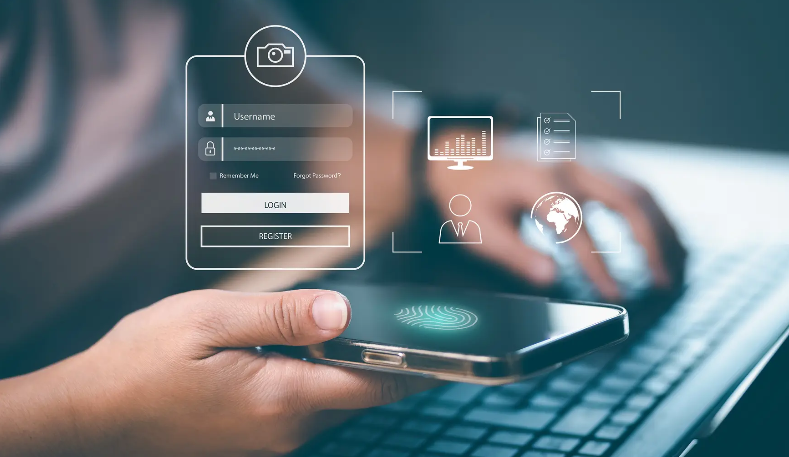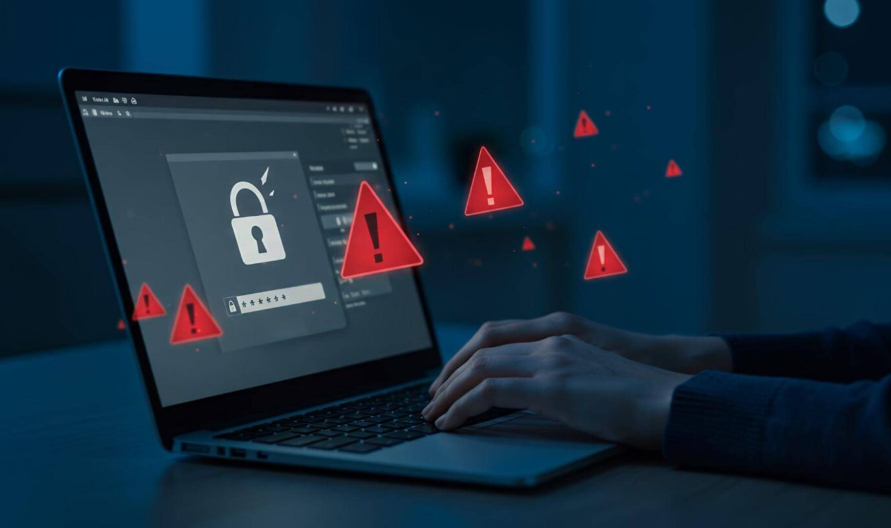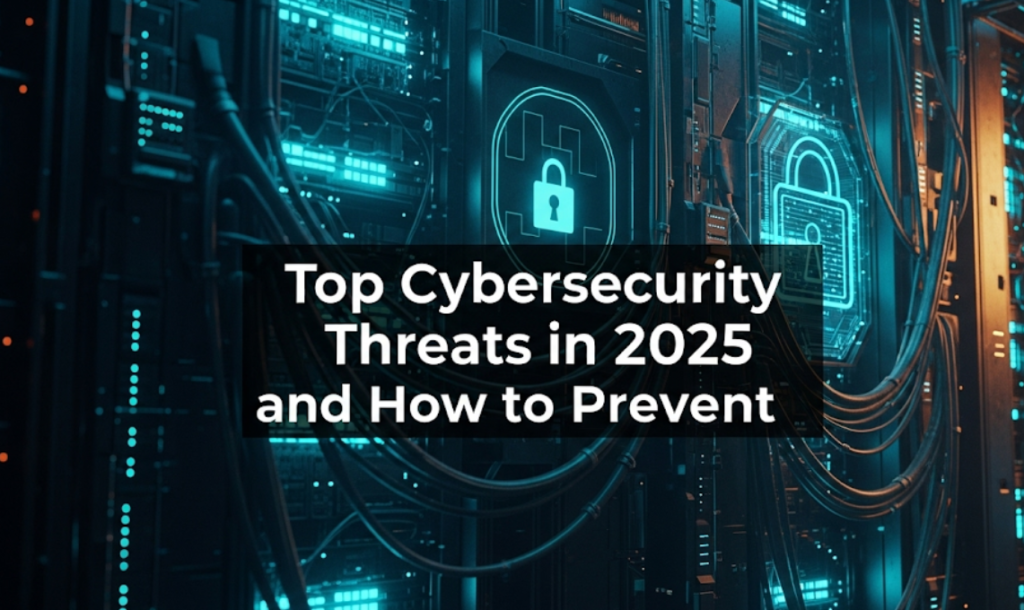What Makes Digital Security More Important Than Ever
The challenges of cybersecurity in 2025 are of unprecedented danger and complexity. Smarter tools are being used by hackers more than ever. They target small businesses as well as large corporations.
The world of digital is expanding rapidly. More people work from home. An increased number of devices are connected to the internet. This provides additional means of attack to criminals.
You may believe that you are safe due to being cautious online. However, the dangers today are much more insidious. They can deceive even tech-savvy individuals.
This handbook will demonstrate the largest online threats this year. You can discover easy tips on how to defend yourself. We will discuss AI-based attacks to smartphone security.
Artificial Intelligence-Based Cyber Attacks: A New Cyber Nightmare
Artificial intelligence has transformed the work of criminals on the internet. They are currently taking advantage of AI to design more sophisticated attacks. These intelligent programs are able to compose flawless emails in any language. They also have the ability to imitate voice and face.
Deepfake Attacks Threaten Individual and Business Security
Deepfake technology creates fake videos and audio that appear entirely genuine. Criminals manage to deceive people using them in the following ways:
- Voice cloning scams: These scammers steal your voice based on social media videos. They phone your family seeking money.
- Video call scams: Deceptive video calls that appear as your boss or your coworker. These are requests for sensitive information or transfers of money.
- Identity theft: Fraudsters generate counterfeit identification authentication videos with your pictures.
The scariest part? Such counterfeit media files are increasingly difficult to identify. Even professionals cannot always tell the difference.
Artificial Intelligence Phishing Becomes More Difficult to Identify
It was easy to identify old phishing emails. Their grammar was poor and their spelling was clearly incorrect. AI-based phishing is different. These emails look perfect. They utilize your writing style and personal details.
Criminals provide AI programs with your social media posts. The AI learns how you write. Then it will make emails that appear like your friends or colleagues.
These intelligent phishing attacks are able to:
- Imitate the email style of your company
- Appear more authentic using current events
- Target individual users with their personal information
- Create websites which appear the same as real websites
Ransomware Evolution: More Dangerous Than Ever
Every year, ransomware attacks are becoming bigger. These programs encrypt your files and demand payment to unlock them. In 2025, cybersecurity threats include much smarter ransomware that is more difficult to remove.
The Double and Triple Extortion Tactics
Your files just got ransomware encrypted. New ransomware is much worse. There is now a technique of double extortion and triple extortion by criminals.
Here’s how it works:
- First threat: Lock your files and demand payment
- Second threat: Steal your information and threaten to publish it online
- Third threat: Attack your customers and partners with the stolen information
This increases the probability of paying by victims. Criminals can still hurt your reputation by publishing personal data even if you have backups of your files.
Attacking Critical Infrastructure
Important services that people rely on are now targeted by ransomware groups. They attack:
- Healthcare systems and hospitals
- Electric grids and power plants
- Water treatment facilities
- Transportation networks
- Schools and universities
The failure of such systems impacts entire communities. This pressure tends to induce organizations to pay astronomical ransoms within a short period.
Supply Chain Attacks: The Digital Thunderbolt
Supply chain attacks are considered to be one of the most perilous threats to cybersecurity in 2025. These attacks do not target you directly. Criminals instead target the companies who produce your software or deliver your services.
Turning Software Updates into Weapons
You likely update programs and apps regularly. This will, most of the time, keep you safe. However, criminals have devised means of introducing malicious code into such updates.
Here’s what happens:
- Criminals hack a software company
- They upload malicious code into the company’s updates
- The update appears normal and passes security checks
- Millions of users download the infected update
- The malware spreads to all these computers
The SolarWinds attack demonstrated how dangerous this could be. Thousands of organizations all over the world were affected by a single infected update.
Third-Party Service Risks
The majority of companies use the services of dozens of other companies for their digital services. This creates a network of links that can be exploited by criminals.
For example:
- Your bank uses a cloud storage facility
- That cloud service gets hacked
- Through the cloud service, criminals gain access to your bank’s data
- Your personal information gets stolen even though your bank wasn’t the direct target
Mobile Device Vulnerabilities: Your Smartphone at Risk
In 2025, smartphones and tablets face new security issues. Most people are not very concerned about mobile security issues. This makes phones an easy target.
Malicious Apps Bypass Security
App stores are secure, but not flawless. Criminals are using novel techniques to bypass these checks by installing harmful apps.
Risky apps disguise themselves as:
- Games with additional features
- Helpful items such as flashlights or calculators
- Well-known company banking or shopping apps
- Popular social media applications
These fake apps can:
- Steal your passwords and personal data
- Access your camera and microphone
- Send expensive text messages without your knowledge
- Attack other devices through your phone
Public Wi-Fi Risks Grow
Public Wi-Fi networks are convenient, but dangerous. Criminals can easily establish fake Wi-Fi hotspots. Once you connect, they can see whatever you are doing on the internet.
New attacks include:
- Evil twin networks: Rogue Wi-Fi networks such as “Free Airport WiFi”
- Man-in-the-middle attacks: Attackers position themselves between you and the actual website
- Malware injection: Hackers inject viruses into the websites you access

Cloud Security Challenges: When Storage Becomes Dangerous
More individuals and companies are storing information in the cloud. This brings forth new security issues that contribute to cybersecurity threats in 2025.
Misconfigured Cloud Settings Cause Data Breaches
Cloud storage is only safe when it is configured properly. Many individuals and businesses fail with their settings. Such errors can make private information public to the entire internet.
Common mistakes include:
- Leaving storage buckets open with public access
- Using weak passwords on cloud accounts
- Failing to enable two-factor authentication
- Giving too many people access
Shared Responsibility Problems
Cloud security is based on a shared responsibility model. The cloud service provider secures their servers. You safeguard your information and account.
Many users do not understand this. They believe that all security is taken care of by the cloud company. This causes gaps where criminals can invade areas that are meant to be safeguarded by the user.
Internet of Things (IoT) Exploits
Smart devices are everywhere. Your house may include smart door locks, cameras, thermostats, and speakers. Every connected device poses a possible point of attack by criminals.
Smart Home Devices as Attack Vectors
Many IoT devices have poor security. They use default passwords which are never changed. They are not updated for security issues on a regular basis.
These devices may be used by criminals to:
- Spy on your family with cameras and microphones
- Enter your home network and other equipment
- Attack other people’s networks using your equipment
- Study your daily habits to plan physical crimes
Industrial IoT Vulnerabilities
IoT devices help businesses track equipment and automate operations. These industrial devices are frequently less secure than home devices.
If criminals attack industrial IoT devices, they can:
- Shut down factory production lines
- Steal valuable business data
- Make equipment malfunction or break
- Gain access to the company’s main computer network
The Human Factor: Social Engineering
Each year technology becomes more secure. Therefore, criminals are more focused on deceiving people rather than hacking security systems. These psychological attacks pose huge cybersecurity threats in 2025.
Sophisticated Phishing Attacks
Today’s phishing extends way beyond fake emails. Criminals employ several channels to appear more convincing:
- Vishing: Fake telephone calls that appear to be from your bank
- Smishing: Fake text messages that appear as delivery notifications
- Social media impersonation: Criminals pretend to be individuals you know
- Dating app scams: Fraudsters develop fake romantic relationships
Business Email Compromise (BEC) Attacks
These are attacks aimed at businesses where the attacker masquerades as a business executive. The fake emails request employees to send money or sensitive data.
BEC attacks are effective because they:
- Research company structures and employee names
- Strike when executives are traveling or busy
- Use urgent language to force immediate action
- Target new staff who may be unaware of company procedures
Prevention Strategies: Your Digital Defense Plan
In 2025, defending against cybersecurity threats requires a multi-layered approach to protect yourself. There is no one-size-fits-all solution against all attacks.
Strong Authentication Processes
Two-Factor Authentication Everywhere
Two-factor authentication (2FA) is an additional security measure. Criminals may steal your password, but still cannot access your accounts without the second factor.
Set up 2FA on:
- All email accounts
- Banking and financial services
- Social media accounts
- Work applications
- Cloud storage services
Use Strong and Unique Passwords
Each account should have a different password. A password manager will help you create and store strong passwords.
Good passwords are:
- At least 12 characters long
- A combination of symbols, letters, and numbers
- Not based on personal information
- Not used on multiple accounts
Keep Software Updated
Enable Automatic Updates
Turn on auto-updates for:
- Operating systems (Windows, macOS, iOS, Android)
- Web browsers and browser extensions
- Antivirus software
- All apps and programs
Update IoT Devices and Router Firmware
Check your home router for updates regularly, at least once per month. Many router manufacturers now provide automatic updates.
For smart home devices:
- Check manufacturer websites for updates
- Enable automatic updates when possible
- Replace devices that no longer receive security patches
Network Security Best Practices
Secure Your Home Wi-Fi
- Change the default router password
- Use WPA3 encryption (or WPA2 if WPA3 is not available)
- Hide your network name (SSID)
- Set up a guest network
Be Careful with Public Wi-Fi
- Avoid accessing sensitive accounts on public Wi-Fi
- Use a VPN whenever you must use public networks
- Turn off auto-connect features
- Verify with staff before connecting to any network
Email and Communication Safety
Verify Before You Trust
- Confirm requests by calling the sender using a known phone number
- Look closely at email addresses for minor misspellings
- Be suspicious of requests that demand immediate action regarding money or information
- Don’t click links in suspicious emails
Use Encrypted Communication
For sensitive matters:
- Use encrypted messaging apps like Signal
- Enable email encryption when possible
- Be cautious about what you share on social media
- Consider secure email services for important communications
Business-Specific Protection Measures
Companies face greater risks and require stronger protection against cybersecurity threats in 2025.
Employee Training Programs
Regular Security Awareness Training
Train employees to identify:
- Phishing attempts and suspicious emails
- Social engineering tactics
- Safe password practices
- Proper handling of sensitive data
Simulated Phishing Tests
Send fake phishing emails to test employee awareness. This helps identify those who need additional training without putting the company at real risk.
Data Protection Strategies
Regular Data Backups
- Back up data daily or in real-time
- Store backups in multiple locations
- Test backup recovery regularly
- Keep some backups offline and disconnected from the network
Access Control and Monitoring
- Give employees access only to data they need
- Monitor who accesses sensitive information
- Log all system activities
- Set up alert systems for suspicious activity
Incident Response Planning
Develop a Response Plan
Create written procedures for:
- How to report a security incident
- Who to contact when attacks occur
- Steps for containment and mitigation
- Communication plans for customers and partners
Practice Response Scenarios
Conduct tabletop exercises to practice responding to various types of attacks. This helps teams respond faster and more effectively during real incidents.
Securing Your Digital Future
Cybersecurity threats in 2025 will continue evolving. Stay ahead by preparing for future challenges.
Emerging Technologies and Risks
Quantum Computing Threats
Quantum computers may be able to break current encryption methods. Although this is still years away, start preparing now:
- Follow developments in quantum-resistant encryption
- Plan to upgrade to new security standards in advance
- Consider how long your sensitive data needs to remain protected
5G Network Security
5G networks enable connections to more devices but create new vulnerabilities:
- Learn how 5G affects your devices
- Plan security for increased connectivity
- Watch for new threat scenarios specific to 5G
Developing a Security-First Mindset
Think Like an Attacker
Regularly ask yourself:
- What would criminals want with my data?
- How might they try to trick me?
- What would happen if my security failed?
- What are the weak points in my protection?
Stay Informed About Emerging Threats
- Follow trusted cybersecurity news sources
- Subscribe to security awareness newsletters
- Join professional security communities
- Share threat information with others

Frequently Asked Questions
Q: What are the most serious cybersecurity threats in 2025? A: AI-powered phishing attacks, advanced ransomware with multiple extortion methods, supply chain attacks, and sophisticated social engineering are the biggest threat categories. These are harder to detect and more damaging than previous attacks.
Q: How can I tell if an email is a phishing attack? A: Look for urgent language, requests for personal information, suspicious email addresses, and unexpected attachments or links. When in doubt, contact the sender through another method to verify the request.
Q: Is public Wi-Fi safe to use in 2025? A: Public Wi-Fi remains risky. Criminals can easily set up fake networks or intercept your data. Use a VPN and avoid accessing sensitive accounts like banking or email if you must use public Wi-Fi.
Q: How often should I update my software? A: Enable automatic updates whenever possible. Install critical security patches immediately when they become available. Check at least weekly for updates on devices that don’t auto-update.
Q: What should I do if I think I’ve been hacked? A: Immediately change passwords on all important accounts, run antivirus scans, monitor financial accounts for unauthorized access, and report the incident to relevant companies and authorities.
Q: Are smart home devices safe to use? A: Smart devices can be secure when properly configured. Change default passwords, enable automatic updates, and review device permissions regularly. Consider using a separate network for IoT devices.
Q: How can small businesses protect themselves from cyber attacks? A: Implement employee training, use strong authentication, perform regular backups, keep software updated, and create an incident response plan. Consider hiring cybersecurity professionals or managed security services.
Q: What’s the difference between antivirus and anti-malware software? A: Modern antivirus software typically includes anti-malware protection. Choose a comprehensive security suite that protects against viruses, malware, phishing, and other threats.
Take Action: What to Do Now
Cybersecurity threats in 2025 are real, but they can be prevented with the right knowledge and tools. Start with the basics: strong passwords, two-factor authentication, and regular updates.
Don’t try to do everything at once. Prioritize your most important accounts and devices first. Perhaps begin with your most valuable accounts and equipment.
Remember that cybersecurity is not a one-time task. New threats emerge every day. Stay informed and update your protection measures accordingly.
The digital world offers amazing opportunities, but also real risks. By paying proper attention to cybersecurity and following the prevention strategies outlined in this guide, you can enjoy the benefits of technology without becoming a victim of cybercriminals.
The choice to stay safe online is yours. Take action now to protect yourself and those close to you from the cybersecurity threats of 2025.

